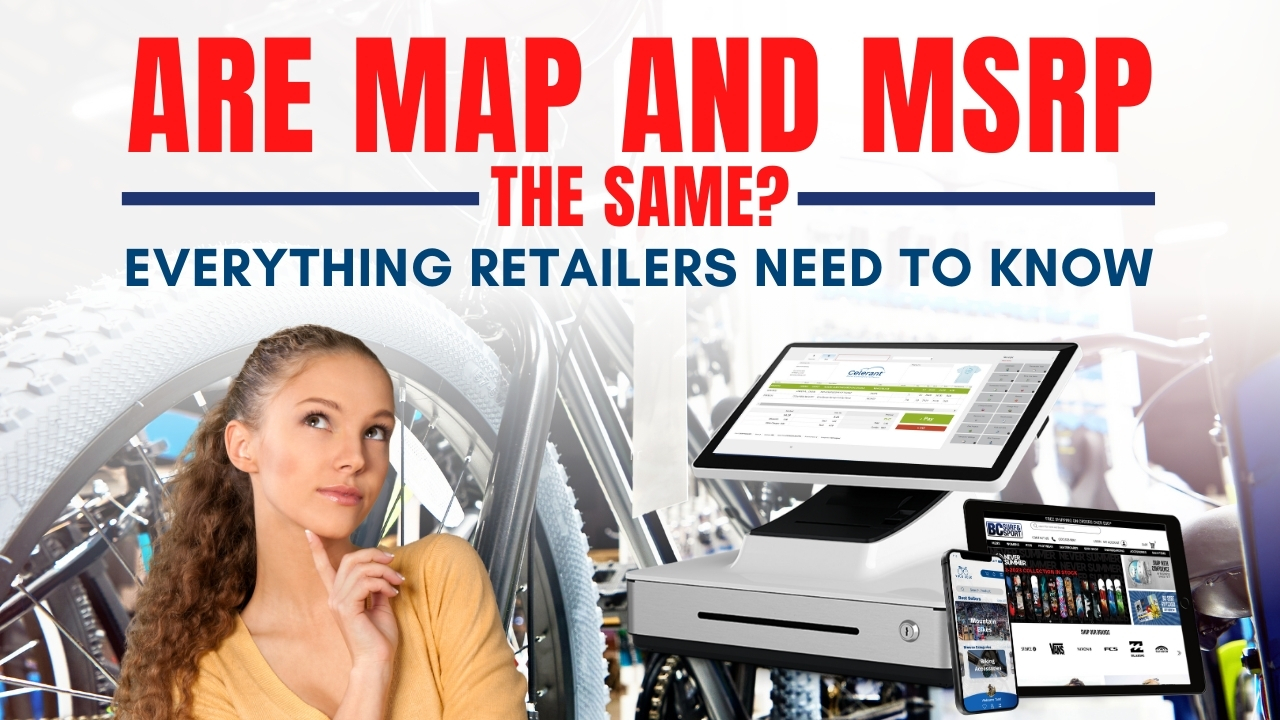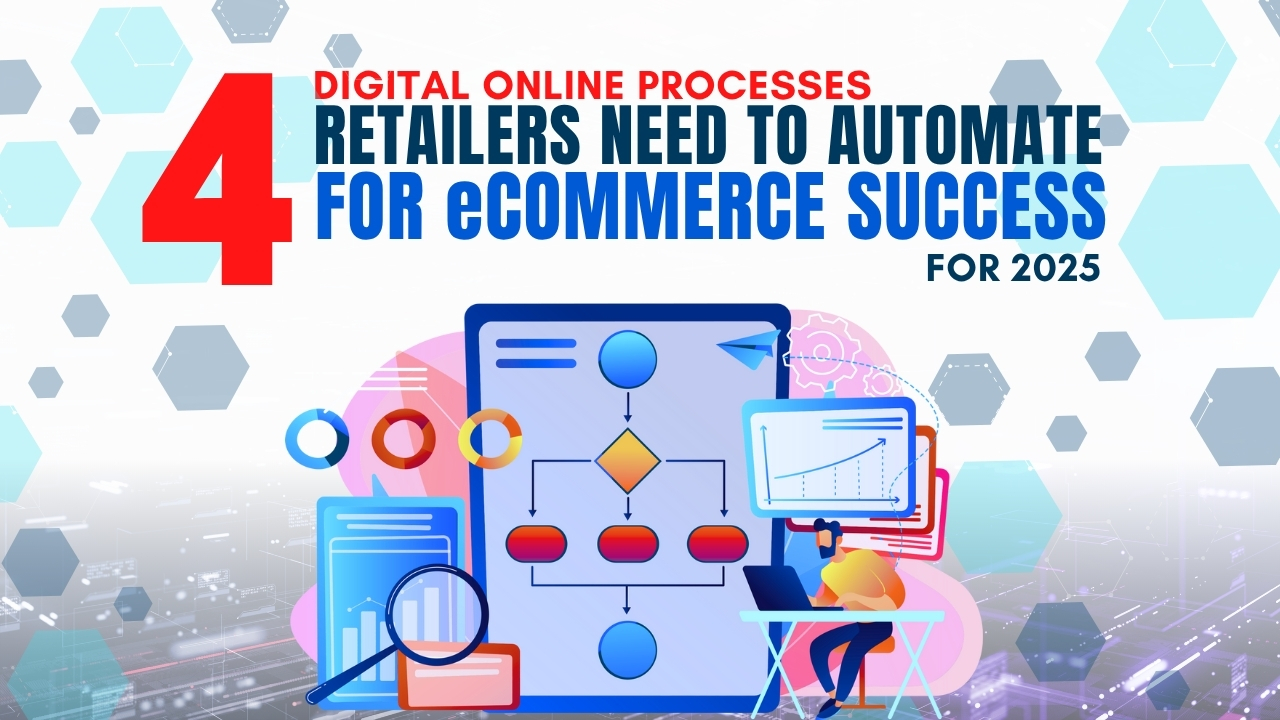Blog
Are MAP and MSRP the Same? Everything Retailers Need to know
September 27, 2024 / 8 minute read / By Zoya Naeem

Blog

If you have ever been confused about the difference between MAP (Minimum Advertised Price) and MSRP (Manufacturer’s Suggested Retail Price), you’re not alone. These two terms get thrown around a lot in the retail world, and while they sound similar, they actually serve very different purposes.
As a retailer, understanding the difference between MAP and MSRP isn’t just about knowing the verbiage -it’s crucial for staying compliant with manufacturers’ policies and making sure your pricing strategy keeps you competitive without risking penalties.
So, what’s the deal?
In this article, we will clear things up and learn why knowing how MAP and MSRP work can help your business thrive. We’ll also talk about:
The Manufacturer’s Suggested Retail Price (MSRP) is exactly what it sounds like -it’s the price that the manufacturer suggests retailers sell a product for. Think of it as a guideline, not a rule. Manufacturers set the MSRP to help maintain consistent pricing across different stores and channels, so whether a customer is shopping online or walking into your store, the price should be pretty similar.
But why do manufacturers care about setting an MSRP? It’s all about protecting the brand. By keeping prices consistent, they ensure that their products don’t feel “cheap” in one store and overly expensive in another. This keeps things fair and gives customers confidence in their brand, something that’s important when you’re dealing with big industries like electronics or apparel, where competition is fierce and brand reputation matters.
For example, take a popular smartphone. You’ve likely noticed that the price is almost always the same, whether you’re buying from an electronics retailer, a big-box store, or directly from the manufacturer. That’s how the MSRP works -it gives you a suggested baseline for pricing while leaving some room for you to adjust based on your store’s strategy
Minimum Advertised Price (MAP) is the lowest price a retailer is allowed to publicly advertise a product for. It’s set by the manufacturer, and the whole idea behind it is to stop retailers from devaluing a brand by advertising products at rock-bottom prices.
But why do manufacturers care how low you advertise a product?
It’s simple-brand image. If a product is constantly being advertised for cheap prices, customers may start to think it’s low-quality. By setting a MAP, manufacturers ensure that their product retains its value in the eyes of customers, no matter where it’s being sold.
The eCommerce platform you use might have built-in tools to help you make sure you’re not selling below MAP (Minimum Advertised Price). If you’re using product feeds from your distributors or suppliers, and your pricing rules include an option like “Never sell below MAP,” it means that the MAP price set by the manufacturer is being sent directly to you. By selecting this option, you can safeguard your business by ensuring you never drop your price below what the manufacturer requires.
Now, here’s where MAP gets interesting -it only applies to the advertised price, not the actual selling price. That means you can technically sell a product below the MAP price in-store or to a specific customer, but you’re not allowed to advertise it for less than the MAP.
You might have seen phrases like “add to cart to see price” on certain online stores -this is one way retailers work around MAP restrictions.
You will often see MAP pricing in industries like tech and sports equipment, where maintaining brand value and market competition is super important. For instance, a manufacturer might set the MAP for a pair of premium running shoes at $100. You could sell them for $90 in your store, but you wouldn’t be able to advertise them for less than $100 in any of your ads or on your website.
Now if you’re wondering why MAP and MSRP matter to your retail business, here’s the deal -they can seriously impact how you price, promote, and sell your products.
Since MAP controls the lowest price you can advertise, it directly affects your marketing and promotion strategies. Let’s say you’re planning a sale or a big discount, you will need to make sure you’re still respecting the MAP rules. Otherwise, you could run into trouble with the manufacturer, which is definitely not the headache you want. Keeping those relationships strong is key because, without them, you might lose access to key products -or worse, you might get hit with penalties for breaking the rules. So, sticking to MAP doesn’t just protect the brand’s image -it keeps you in good standing too.
Conversely, MSRP is a great starting point for pricing your products. While it’s not set in stone, it gives you a better idea of what the manufacturer thinks the product should sell for. This helps you set a price that’s competitive but still leaves room for a healthy profit margin.
Understanding MAP and MSRP gives you more control over your retail pricing strategy -you can strike the perfect balance between running profitable promotions and keeping your customers happy -while still playing by the rules.
We all know that every retailer loves a good discount. But when MAP comes into play, it can feel like you’re stuck with limited options. So, is there a way to work around MAP while still staying compliant?
The short answer: yes, but you need to make sure you are not breaking the retail MAP rules
Bundling is one of the most common strategies. Instead of discounting a single product, you can bundle it with other items to create a value-packed deal. Customers love the idea of getting more for their money, and since you’re not technically lowering the advertised price of the MAP-protected product, you are staying within the rules.
Another way to work around retail MAP is by offering freebies. Maybe you can’t drop the price of that premium item, but you can sweeten the deal by throwing in a gift or offering free shipping. These perks don’t affect the listed price and are great ways to incentivize sales without breaking MAP policies.
But, ignoring MAP isn’t a path you want to go down. If you violate MAP, manufacturers can cut off your supply, hit you with penalties, or maybe even blacklist you altogether. That’s a surefire way to lose access to key products, not to mention damage your reputation in the industry. So, while it’s tempting to slash prices for a quick win, the long-term cost of violating MAP is far worse.
At the end of the day, you can still offer great deals while respecting MAP -it’s all about getting strategic with how you promote your products.
Thinking about how to balance MAP and MSRP without tying yourself into knots? The key is knowing when to stick to the manufacturer’s pricing and when to adjust it to fit your retail business strategy.
When we talk about MSRP, it’s a guideline, not a rule. You have the flexibility to tweak it based on what makes sense for your business and target market. It could be you’re in a competitive industry where everyone’s undercutting each other, or perhaps you’re selling high-end products where pricing higher might actually attract more attention. Either way, MSRP gives you a frame that you can use to adjust to your unique business goals.
And then, when we talk about MAP, which requires a little more finesse. You’re limited by the minimum advertised price, but you’re not locked into it when it comes to promotions. Bundling products together or adding value through loyalty programs or limited-time offers keeps your prices competitive while respective MAP rules.
But how do you keep all these pricing strategies straight?
Well, that’s where your retail POS system comes in. With the right all-in-one POS, you can easily track inventory, analyze pricing trends, and stay on top of MAP compliance. You don’t have to manually check each time you advertise a product -your system will notify you if something’s off, saving you time and potential headaches.
Choosing an all-in-one POS system with integrated inventory management, like Celerant, allows you to stay ahead of the game. It can help you track inventory, reduce waste, and optimize sales by giving you insights into your best-selling products. Plus, you’ll know when to slash prices or offer markdowns only when it’s absolutely necessary. More control means more profits.
Once you grasp how these pricing strategies work, you’re able to navigate supplier expectations and market demand with confidence.
Understanding the differences between MAP and MSRP is more than just following the rules -it’s about staying competitive, protecting your brand relationships, and keeping your profit margins healthy.
But here’s the thing, no matter how well you understand MAP and MSRP, without the right tools, managing these pricing policies can get tricky. And that’s where a reliable retail POS system, like Celerant, comes in. It’s designed to handle the complexities of your pricing, inventory, and compliance needs -all in one place. With our all-in-one POS retail system, you can plan smarter, automate reordering, and even make quick pricing adjustments based on real-time data.
Take our short quiz to determine which of Celerant’s retail software is right for your business. Depending on your market, several distributor integrations might be available to help you better manage your pricing rules, helping guide you to publish the accurate MSRP and not fall below MAP.
 Discover how GEO is reshaping search, and what smart retailers must do now to stay visible on AI-powered… |
 With more people shopping online than ever, SMB retailers need a plan to ensure the most conversions… |